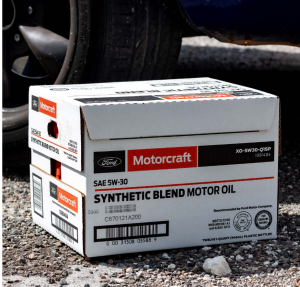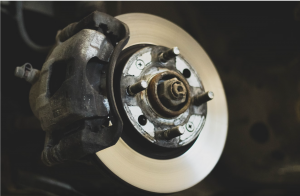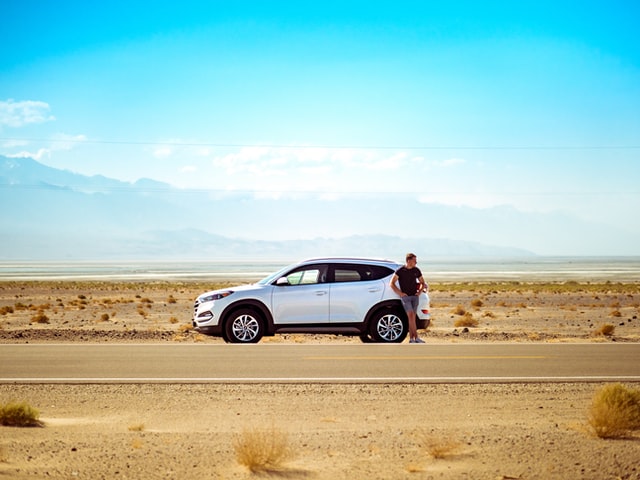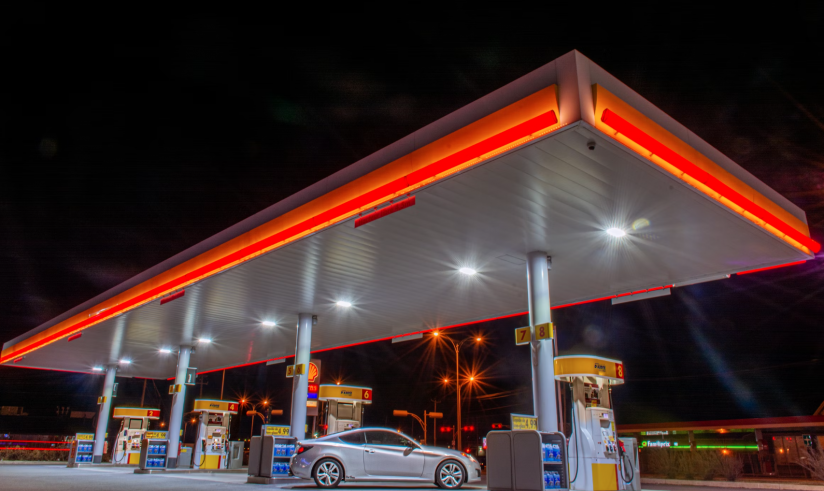7 Signs It’s Time to Change Your Car’s Air Filter
Keeping your car’s air filter in good condition is essential for maintaining your vehicle’s performance and ensuring a smooth, efficient ride. Over time, air filters can become clogged with dirt, dust, and debris, which can affect your car’s engine and overall performance. Here are seven signs that it’s time to change your car’s air filter.
1. Decreased Fuel Efficiency
One of the most noticeable signs that your air filter needs replacing is a decrease in fuel efficiency.
- A dirty air filter restricts the airflow to your engine, causing it to work harder and use more fuel. This can lead to a noticeable drop in your car’s miles per gallon (MPG).
- Maintaining a clean air filter can help you save money at the pump and reduce your car’s environmental impact. For more tips on improving fuel efficiency, check out our blog on How to Improve Your Vehicle’s Fuel Efficiency.
Keeping your air filter clean is an easy way to ensure that your engine gets the right amount of air, which is crucial for optimal combustion. Regularly replacing the air filter can prevent your engine from overworking and consuming excess fuel. This simple maintenance task can have a significant impact on your car’s performance and your wallet.
2. Engine Misfires
Engine misfires are another common indicator of a clogged air filter.
- When the air filter is dirty, it can disrupt the air-fuel mixture in your engine, leading to incomplete combustion. This can cause your engine to misfire or run rough.
- If you notice your car jerking or sputtering, especially when you start it or accelerate, it might be time to inspect your air filter.
Engine misfires can lead to a host of problems, including damage to the spark plugs and other engine components. Addressing this issue early by replacing a clogged air filter can save you from more costly repairs down the line. Ensuring your engine runs smoothly is essential for maintaining the overall health of your vehicle.
3. Unusual Engine Sounds
A clogged air filter can also cause your engine to make unusual noises.
- Listen for coughing, sputtering, or popping sounds, which can indicate that your engine isn’t getting enough air.
- These sounds are often more pronounced during acceleration, as the engine struggles to draw in the necessary air to function properly.
Unusual engine sounds should never be ignored, as they can indicate underlying issues that need immediate attention. By replacing your air filter regularly, you can prevent these sounds and ensure that your engine operates quietly and efficiently. This not only improves your driving experience but also extends the life of your engine.
4. Reduced Acceleration
If your car isn’t accelerating as quickly as it used to, a dirty air filter could be to blame.
- A clogged air filter restricts the airflow, causing your engine to lose power. This can result in sluggish acceleration and poor overall performance.
- Keeping your air filter clean ensures that your engine gets the air it needs to perform at its best.
Reduced acceleration can be frustrating and dangerous, especially when merging onto highways or overtaking other vehicles. By keeping your air filter clean, you ensure that your car can accelerate quickly and respond promptly to your driving commands. This simple maintenance task can make a big difference in your vehicle’s responsiveness.
5. Visual Inspection
Sometimes, you can tell it’s time to change your air filter just by looking at it.
- If your air filter appears dirty, clogged, or covered in debris, it’s time for a replacement. A clean air filter should be white or off-white, while a dirty one will be noticeably darker.
- Regular visual inspections can help you stay ahead of potential issues and keep your engine running smoothly.
Performing regular visual inspections of your air filter is a quick and easy way to ensure it remains in good condition. By replacing the air filter when it appears dirty, you can avoid performance issues and keep your engine running efficiently. This proactive approach to maintenance can save you time and money in the long run.
6. Check Engine Light
Modern cars are equipped with sensors that can detect when the air filter is clogged.
- If your check engine light comes on, it could be a sign that your air filter needs to be replaced. This light can indicate various issues, so it’s essential to diagnose the exact problem.
- For more information on what your check engine light might be indicating, visit our blog on FAQs About Common Dashboard Lights.
The check engine light is a crucial indicator that something is wrong with your vehicle. While it can signal various issues, a clogged air filter is a common cause. Addressing this problem promptly by replacing the air filter can prevent more severe issues and keep your car running smoothly. It’s always best to investigate the cause of the check engine light to avoid potential damage to your vehicle.
7. Dirty Exhaust
Finally, a clogged air filter can lead to dirty exhaust.
- If you notice black smoke coming from your exhaust, it could be a sign that your air filter is restricting airflow. This can cause the fuel to burn incompletely, leading to increased emissions.
- Addressing this issue promptly can help reduce your car’s environmental impact and improve its performance.
Dirty exhaust is not only harmful to the environment but also a sign that your engine is not running efficiently. By replacing your air filter, you can ensure that your engine receives the clean air it needs to burn fuel properly. This reduces harmful emissions and improves your car’s overall performance, making it more eco-friendly and efficient.
Give Us A Visit!
Changing your car’s air filter regularly is a simple yet effective way to maintain your vehicle’s performance and efficiency. If you notice any of these signs, it’s time to check your air filter and consider a replacement. Regular maintenance is crucial to keeping your car in top condition, especially if you’re planning a road trip. For more car care tips, read our Ultimate Summer Road Trip Car Care Checklist.
At Dick’s Automotive in Clovis, CA, we’re here to help with all your auto maintenance needs. If you think it’s time to change your air filter or need any other service, don’t hesitate to reach out to us. Our expert mechanics are ready to ensure your car runs smoothly and efficiently.
Your Ultimate Summer Road Trip Car Care and Checklist
Summer is upon us, and it’s the perfect time for road trips with family and friends. But before you hit the open road, it’s essential to ensure your vehicle is in top condition to avoid any unexpected breakdowns. At Dick’s Automotive in Clovis, CA, we prioritize your safety and the health of your car. With a commitment to God, family, and unparalleled service, we’re here to guide you through the ultimate summer road trip car care checklist.
The Importance of Pre-Trip Vehicle Inspection
As faithful stewards of the vehicles that keep us connected with loved ones and our communities, performing a thorough inspection before embarking on a long journey is crucial. This not only ensures your safety but also helps in preventing accidents and unwanted breakdowns. Moreover, identifying and fixing minor issues before they escalate into major problems can save you considerable time and money, providing peace of mind throughout your journey.
Check the Fluids
Fluids are your vehicle’s lifeblood, ensuring smooth operation and preventing damage. Start by checking the engine oil; if it’s dark or gritty, an oil change is necessary. Coolant levels should also be topped up to prevent your engine from overheating during those long summer drives. Additionally, the condition of the brake fluid is crucial—if it’s low or appears dirty, it requires immediate attention to ensure effective braking.
Inspect the Tires
Your tires are the only part of your car that touches the road, so they must be in good condition. Ensure your tires have sufficient tread depth for good traction; using the penny test, if you can see Lincoln’s head, it’s time for new tires. Also, proper tire pressure is vital for fuel efficiency and handling. Remember to check the condition and pressure of your spare tire, as it can be a lifesaver in emergencies.
Battery Health
A reliable battery is essential for a hassle-free trip. Ensure your battery terminals are clean and corrosion-free to prevent starting issues. Testing the battery’s charge level is equally important; if it’s low, consider replacing it before your trip to avoid any unwelcome surprises on the road.
Brake System Check
Your vehicle’s brake system is critical for safety, especially on long trips. Inspect the brake pads and rotors for wear and tear; replacements are necessary if the pads are thin or the rotors are warped. Additionally, ensure the brake fluid is at the correct level and free from contaminants to maintain optimal braking performance.
Lights and Wipers
Good visibility is essential for safe driving, especially during summer storms or nighttime travel. Check that all your vehicle’s lights, including headlights and taillights, function correctly, and replace any burnt-out bulbs. Additionally, inspect your windshield wipers to ensure they are in good condition and replace them if they leave streaks, ensuring clear visibility during rain.
Air Conditioning and Cooling Systems
A well-functioning air conditioning system is necessary for summer trips to keep everyone comfortable. Ensure your coolant levels are adequate to prevent overheating, and test the AC system to ensure it’s blowing cold air. It might need a recharge or repair to keep your journey pleasant if it isn’t.
Emergency Kit
Preparation is vital in handling unexpected situations on the road. An emergency kit with essential tools like a wrench, screwdriver, and pliers can be beneficial. A first aid kit is essential for treating minor injuries. At the same time, a flashlight with extra batteries provides visibility during nighttime emergencies. Jumper cables are also a must-have in case of a dead battery.
Here’s How to Keep Your Car in Top Shape During Your Trip
Maintaining your vehicle’s performance during the trip is as important as the pre-trip checks. Make it a habit to check tire pressure, oil, and coolant levels each morning. This ensures your vehicle remains in top condition throughout the journey. Additionally, stay alert for any unusual sounds that could indicate a problem. If you notice anything unusual, it’s best to investigate promptly to avoid further issues.
Trust Dick’s Automotive for Your Car Care Needs
As you prepare for your summer road trip, remember that Dick’s Automotive in Clovis, CA, is here to support you with top-notch auto repair services. From pre-trip inspections to routine maintenance, our ASE-certified technicians are dedicated to keeping you safe on the road. Please schedule an appointment with us today and travel with confidence, knowing your vehicle is in the best hands.
For more information, visit Dick’s Automotive, check out our specials, or schedule your appointment. Let’s make this summer road trip your best one yet!
FAQs About Common Dashboard Lights and What They Mean
Welcome to Dick’s Automotive in California, your trusted source for expert auto care and guidance. As car owners, we’ve all been there—driving along when suddenly, a mysterious light pops up on the dashboard.
What does it mean? Should you pull over immediately, or can it wait?
In this blog, we’ll answer some of the most frequently asked questions about common dashboard lights and help you understand what they mean for your vehicle’s health.
Understanding Dashboard Lights
Think of your dashboard lights as your car’s personal health report. Some are like friendly nudges, reminding you it’s time for a pit stop (maybe oil change). Others are more like flashing red sirens, demanding immediate attention.
Modern car dashboards are intricate displays filled with symbols, lights, and gauges. While they offer a wealth of information, they can also be intimidating, especially when a cryptic light illuminates. Here’s a breakdown of some frequently encountered questions:
Q: What’s the difference between red, yellow, and orange lights?
A: The color of the light typically indicates the severity of the issue:
- Red: This is a critical issue requiring immediate attention. Pull over safely as soon as possible, and shut off your engine. Consult your owner’s manual or seek professional help from a qualified mechanic like Dick’s Automotive.
- Yellow or orange: These signify a potential problem that needs to be addressed soon but doesn’t necessarily warrant immediate roadside assistance. However, it’s best not to ignore them for too long.
Q: What does the “Check Engine Light” mean?
A: This notorious light is the automotive equivalent of the ambiguous “See Doctor.” It can indicate many issues, from a faulty sensor to a more severe problem. It’s best to have your car diagnosed by a professional using specialized diagnostic tools.
Q: I see a light that looks like a thermometer. What does that mean?
A: This is your engine temperature gauge. If the needle creeps towards the red zone, your engine is overheating. Pull over safely, turn off the engine, and let it cool down before attempting to restart. This could be a sign of a coolant leak, a faulty thermostat, or even a clogged radiator. Don’t risk a roadside breakdown – schedule an appointment with Dick’s Automotive to diagnose and fix the issue!
Q: My dashboard light looks like a car skidding. What’s that all about?
A: This could represent your Anti-Lock Brake System (ABS) light. The ABS helps prevent wheel lockup during hard braking. If this light is on, your ABS might not function properly. While your regular brakes should still work, it’s important to have the system checked for optimal safety.
Q: I see a flat tire symbol on my dashboard. Does that mean I have a flat tire?
A: This light indicates a problem with your Tire Pressure Monitoring System (TPMS). It doesn’t necessarily mean you have a flat tire, but it could indicate one or more underinflated tires. Pull over safely and check your tire pressure with a gauge (most gas stations offer air pumps and sometimes even assistance). It could be a sensor issue if the light remains on after inflating the tires. Dick’s Automotive can diagnose and fix any TPMS problems.
Note: This list is not exhaustive, and every car has a unique set of warning lights. Consult your owner’s manual for a comprehensive list and detailed descriptions specific to your vehicle.
Don’t Let Your Dashboard Leave You in the Dark!
While this blog has equipped you with a better understanding of common dashboard lights, remember that it’s not a substitute for a professional diagnosis. Schedule an appointment with Dick’s Automotive in Clovis, CA, today! Our team of Ase-certified mechanics is here to decipher your car’s cryptic messages and ensure your vehicle runs smoothly and safely. We offer a variety of services, from routine maintenance to complex repairs.
Remember, your car’s health is our priority!
How to Improve Your Vehicle’s Fuel Efficiency: Tips and Tricks
Getting the most gas mileage out of your car in this fast-paced, penny-pinching environment is more critical than ever. Improving fuel economy helps cut costs and lessens environmental impact, whether you’re driving a compact car to work or a big SUV for vacations. At Dick’s Automotive, we understand the importance of fuel economy, and we’re here to share some expert tips and tricks to help you get the most out of every gallon of gas.
Understanding the Factors Affecting Fuel Efficiency
Before diving into the tips, it’s essential to understand the factors that influence your vehicle’s fuel efficiency. Several variables can impact how efficiently your car uses fuel:
- Poor Driving Practices: Aggressive driving, including going too fast and accelerating too quickly, will drastically reduce gas mileage. The same holds for prolonged idling, which wastes fuel.
- Vehicle Maintenance: Routine vehicle maintenance, including regular oil changes, frequent air filter replacements, and tire rotations, ensures optimal fuel efficiency.
- Vehicle Specifications: The type of vehicle you drive, its size, weight, and engine type all affect fuel consumption. Additionally, factors like aerodynamics and tire pressure can impact fuel efficiency.
- Fuel Quality: Your fuel quality can influence your vehicle’s performance and efficiency. Using high-quality fuel and following manufacturer recommendations for fuel octane can improve fuel economy.
Now seems like the perfect time to delve into actionable tips to improve your vehicle’s fuel efficiency:
Tip 1: Maintain Your Vehicle Regularly
Regular maintenance is critical to running your vehicle smoothly and efficiently. Schedule routine oil changes, check and replace air filters as needed, and ensure your tires are adequately inflated. Properly inflated tires reduce rolling resistance, improving fuel efficiency by up to 3%.
Tip 2: Drive Wisely
Your driving habits significantly impact fuel consumption. Do not engage in reckless driving behaviors such as speeding, rapid acceleration, and sudden braking. Driving consistently and anticipating traffic flow can help improve highway fuel efficiency by up to 33%.
Tip 3: Reduce Vehicle Weight
Extra weight in your vehicle does increase fuel consumption. Get rid of those excess loads from your trunk and roof rack to lighten the weight and improve fuel efficiency.
Tip 4: Take Advantage of Cruise Control
To maintain a constant speed and save gas, use cruise control while driving on the highway. This can make a 14% difference in fuel efficiency on lengthy journeys.
Tip 5: Plan Your Trips
Combine errands and plan your routes efficiently to minimize unnecessary driving. Avoid rush hour traffic whenever possible to reduce idle time and improve fuel efficiency.
Tip 6. Avoid Excessive Idling
Idling consumes fuel without any significant benefit. If you might have to wait over a minute, try turning off your engine to conserve fuel.
Tip 7: Use the Right Fuel
Follow your vehicle’s manufacturer’s fuel type and octane rating recommendations. Using higher-octane fuel than required does not improve performance or fuel efficiency.
Tip 8. Keep Your Engine Tuned
A well-kept engine works more effectively, using less gas. Schedule regular tune-ups to ensure that your engine is performing at its best.
Tip 9: Monitor Your Fuel Economy
Keep track of your vehicle’s fuel consumption over time. If you notice an unexpected drop in gas mileage, it could mean a problem needs to be fixed by a qualified technician.
Plan a visit with us and experience unmatched service firsthand
By following these expert tips and entrusting your vehicle to the skilled team of ASE-Certified mechanics and master mechanics at Dick’s Automotive in Clovis, CA, you’re not just ensuring improved fuel efficiency and lower fuel costs for yourself but also contributing to leaving the world in better shape for generations to come.
Feel free to schedule an appointment with us today via our website, and let us help you get the most out of your vehicle. While you’re at it, why join our vibrant community on Facebook? Stay updated on the latest automotive tips, engage with fellow car enthusiasts, and join our growing family.
We look forward to connecting with you online and in our shop!
What Is Defensive Driving and Why Is It Crucial for Road Safety?
What Is Defensive Driving and Why Is It Crucial for Road Safety?
Practicing defensive driving is not a sign of cowardice; rather, it is an act of safety and responsibility on the part of every driver.
In this post, we will check out the concept of defensive driving and explore why it’s crucial for road safety and vehicle maintenance.
What is Defensive Driving?
Defensive driving goes beyond being a set of skills; it’s a mindset that prioritizes safety and anticipates potential hazards on the road. It involves being aware of your surroundings, adapting to changing conditions, and taking proactive measures to avoid accidents. Defensive driving goes beyond simply obeying traffic laws – it’s about staying vigilant and prepared for the unexpected.
The Importance of Defensive Driving for Road Safety
Now, you might be wondering why defensive driving is so important. Well, let me break it down for you:
Accident Prevention
The main goal of defensive driving is to prevent accidents before they happen. Defensive drivers are better equipped to react quickly and avoid collisions when they stay alert and anticipate potential dangers.
Protection of Life and Property
Defensive driving isn’t just about protecting yourself but also your passengers and other road users. By practicing defensive driving techniques, you can limit the risk of injury and the extent of property damage in case an accident happens.
Reduced Maintenance Costs
Believe it or not, defensive driving can actually help you save money on vehicle maintenance in the long run. When you drive cautiously and avoid sudden stops or aggressive maneuvers, you can minimize wear and tear on your vehicle’s components, ultimately extending its lifespan and reducing repair costs.
Lower Insurance Premiums
Several insurance companies provide discounts to drivers who have completed defensive driving courses. Demonstrating your commitment to safe driving can help you qualify for lower premiums and save money on your car insurance.
Peace of Mind
Finally, practicing defensive driving can give you peace of mind, knowing you’re doing everything you can to stay safe on the road. By taking control of your driving habits and staying vigilant, you can feel more confident behind the wheel and enjoy a smoother, more stress-free driving experience.
How Can Dick’s Automotive Help?
At Dick’s Automotive, we’re committed to promoting road safety and helping our customers become better, safer drivers. Whether you’re in need of routine maintenance, repairs, or expert advice on defensive driving techniques, our team of skilled technicians is here to assist you every step of the way. Schedule an appointment with us today and experience the Dick’s Automotive difference for yourself!
Visit Our Website TO Make An Appointment
Defensive driving is not just a skill – it’s a mindset that can save lives and prevent accidents on the road. Staying alert, anticipating hazards, and practicing defensive driving techniques are simple ways to protect yourself, your passengers, and your vehicle from harm.
If you’re in need of automotive services or expert advice on defensive driving, don’t hesitate to visit the capable team of ASE-Certified mechanics and master mechanics at Dick’s Automotive in Clovis, CA, today. Please contact us today and please schedule an appointment via our website. Also, visit us on our Facebook page and get involved in our community!
10 Must-Have Car Accessories For California Drivers
10 Must-Have Car Accessories For California Drivers
In the beautiful state of California, driving is a go-to activity for most locals and tourists alike. From beach to mountain, enjoying time in your car is important. If you live near a major city in California, you know that traffic can be an issue as well. Here are 10 must-have car accessories that can be particularly useful for California drivers looking to make their drives more enjoyable.
1. Sunshade
Going to the beach all day? Nothing is worse than getting in the car after a long, hot beach day and feeling like you’re being cooked in an oven. Given California’s sunny weather, a sunshade for your car’s windshield helps keep the interior cool and protects against UV rays. Many convenient options are easy to store in your car, and they last a long time with great care.
2. Phone Mount:
Have you ever looked up directions to a new location only to have trouble getting there because you can’t see the directions? A reliable phone mount can help! By mounting your phone, you can ensure safe and hands-free navigation, which helps you stay connected without compromising safety. There are many phone mount models available, such as mounts that attach to your air vent or stick to your dashboard. Once you add a phone mount, returning to not using one is hard!
3. Car Organizer:
Treat your car like an extension of you. Trips are more enjoyable when you can focus on the road with minimal clutter around you. Keep your car clutter-free with a car organizer to store essentials like maps, snacks, water bottles, and other items you need on the go. It’s also great to know where everything you need is located in case you need quick access.
4. Emergency Kit:
Prepare for unexpected situations with an emergency kit containing essentials like first aid supplies, a flashlight, jumper cables, and basic tools. Whether you embark on long road trips or just run quick errands, you never know when you could need your emergency kit. Many convenient, compact options can sit in your trunk, ready to be accessed when needed.
5. Seat Covers:
Are you someone who likes to keep their possessions in neat condition? Is your car a high-traffic area for guests and children? Protect your car seats from wear and tear with durable and comfortable seat covers, which is especially important during extended drives. You’ll be thankful to have them when your kids spill or drop some food!
6. Bluetooth Car Kit:
If you love listening to music, audiobooks, or podcasts on your commute, consider upgrading your car’s audio system with a Bluetooth car kit for hands-free calling and wireless music streaming. Each car is different, but older models may not have Bluetooth. If this is the case for you, you can look into installing a new system in your vehicle so you can enjoy your music and calls hands-free and cord-free.
7. Dash Camera:
Nowadays, you can never be too careful when driving on the road—unfortunately, accidents to happen from time to time. Enhance safety and document your drives with a dash camera that can capture incidents, accidents, or scenic drives. It might save you by proving what happened on your drive!
8. Travel Mug or Cup Holder Adapter:
Are you someone who goes for long drives? Or maybe you are a drink aficionado and always have something different to satisfy your thirst. One of the best ways to stay hydrated on the road is with a travel mug, and consider a cup holder adapter to secure your drinks while driving.
9. Car Charger:
Keeping your devices alive may prove difficult if you are constantly on the go. Maximize your time driving by charging your devices with a reliable car charger, ensuring your phone and other gadgets are powered up during your journeys. This way, you can feel comfortable knowing you can access your phone if you are stranded or need help with directions!
10. GPS Navigation System:
While many use smartphones for navigation, a dedicated GPS navigation system can be a valuable addition, providing real-time directions without draining your phone battery. If you drive a lot for work, a GPS navigation system can come in handy and ensure you know where you are headed. There are many different models of GPS Navigation Systems available in various price ranges, so you can pick what is best for you.
Make An Appointment With Us Today!
If you drive a lot, many accessories can make driving in California more comfortable, organized, and safer for short and longer journeys. Many of these accessories can help you get help faster if you are in an emergency. Rest easy knowing your car can become a sanctuary by including some of these additions in your vehicle.
Don’t hesitate to visit the capable team of ASE-Certified mechanics and master mechanics at Dick’s Automotive in Clovis, CA, today. Please contact us today and please schedule an appointment via our website. Also, visit our Facebook page and get involved in our community!
What Is Transmission Fluid and Why Is It Important?

What Is Transmission Fluid and Why Is It Important?
One vital aspect of maintenance that often goes overlooked is the care of your transmission system. At Dick’s Automotive, we understand the essentiality of regular maintenance to keep your car running perfectly. In this blog, we’ll delve into the world of transmission fluid, exploring its role and significance and why staying on top of its maintenance is vital for the state of your vehicle.
Understanding Transmission Fluid
Transmission fluid is the soul of your vehicle’s transmission system, playing a pivotal role in ensuring smooth operation and longevity. It serves several critical functions, including lubrication, cooling, and maintaining hydraulic pressure within the transmission.
- Lubrication: Just like blood lubricates the human body’s internal components, transmission fluid lubricates the various parts inside the transmission. This helps reduce friction and wear, ensuring that gears and other components move seamlessly.
- Cooling: The transmission system generates heat while in operation, and excess heat can lead to premature wear and damage. Transmission fluid acts as a coolant, dissipating heat and preventing overheating, which is essential for optimal performance.
- Hydraulic Pressure: Many modern transmissions use hydraulic systems to engage gears. Transmission fluid is crucial in maintaining the hydraulic pressure necessary for smooth gear shifts. Without proper fluid levels, shifts can become harsh, leading to potential damage.
Why Transmission Fluid Matters
Now that we’ve understood the role of transmission fluid, let’s discuss why it’s so vital for your vehicle’s health.
- Prevents Wear and Tear: The lubricating properties of transmission fluid reduce friction between moving parts, extending the transmission’s lifespan and preventing premature wear.
- Ensures Smooth Shifting: Proper levels of transmission fluid are essential for smooth and precise gear shifts. Neglecting fluid changes can lead to rough shifting, slipping gears, or even transmission failure.
- Temperature Control: Transmission fluid helps regulate the temperature inside the transmission. Overheating can cause irreversible damage, making regular fluid checks and changes crucial.
- Prevents Costly Repairs: Regular maintenance, including transmission fluid changes, is far more cost-effective than dealing with major transmission repairs or replacements. It’s a small investment that pays off in the long run.
When to Check and Change Transmission Fluid
While the specifics can vary between vehicles, a general guideline is to check your transmission fluid at least once a month and change it as recommended in your owner’s manual. If you notice a burnt smell or discolored fluid, it’s a sign that a change is overdue. At Dick’s Automotive, we recommend a proactive approach to transmission maintenance, preventing potential issues before they become major headaches.
Make Your Appointment Today!
At Dick’s Automotive, our dedication to educating car owners goes hand in hand with our commitment to providing top-notch automotive services. Transmission fluid is a small yet crucial component that plays a big role in the overall health of your vehicle. Understanding its importance and proactively maintaining it can help to ensure a smoother and more reliable driving experience.
If you have questions about your transmission fluid or suspect an issue with your transmission, don’t hesitate to reach out to us. Don’t hesitate to visit the capable team of ASE-Certified mechanics and master mechanics at Dick’s Automotive in Clovis, CA, today. Please contact us today, and please schedule an appointment via our website. Also, visit our Facebook page and get involved in our community!
Expert Guide to Auto Repair and Oil Changes in Clovis, CA

Photo by Rinald Rolle On Unsplash
Expert Guide to Auto Repair and Oil Changes in Clovis, CA
When it comes to auto maintenance in Clovis, CA, oil changes are a fundamental task that can keep your vehicle running smoothly. While some car owners enjoy taking a DIY approach, it’s often a smart move to have experts like us at Dick’s Automotive handle your oil changes. We’ll discuss the benefits of professional service and the top signs your car needs an oil change before delving into the step-by-step guide.
Why Choose Professionals for Your Oil Change in Clovis?
Before you consider changing your car’s oil yourself, consider the advantages of having an experienced auto tech in Clovis, CA, like us, handle the job:
Expertise: Our technicians are well-versed in various car makes and models, ensuring the right oil type and quantity for your vehicle.
Time-Saving: We can complete the oil change quickly, saving you time and hassle.
Thorough Inspection: Our professionals inspect your vehicle for other issues, catching potential problems early.
Environmentally Friendly: We responsibly dispose of used oil, contributing to a cleaner environment.
Now that you understand the benefits of professional service let’s discuss the top signs your car might need an oil change.
Top Signs Your Car Needs an Oil Change
It may be time for an oil change if you notice any of the following:
- Dark and Dirty Oil: If you check your dipstick and the oil appears black and gritty, it’s time for an oil change. Fresh oil is a light amber color.
- Strange Engine Noises: Unusual engine sounds like knocking or rumbling may indicate that your engine lacks proper lubrication.
- Low Oil Level: If your oil level is consistently low, you may have a leak or excessive oil consumption, which requires attention.
- Excessive Exhaust Smoke: Thick, blue-gray exhaust smoke can be a sign of burning oil, signaling a problem with your engine.
If any of this is apparent in your vehicle, call us. We’d love to support your vehicle with our expert auto repair or oil change services. We perform Diagnostic Vehicle Inspections on each vehicle to keep you in the loop about things your vehicle may need. Now, if you’re dedicated to the DIY route, let’s dive into the step-by-step guide for changing your car’s oil.
Step-by-Step Guide: How to Change Your Car’s Oil Like a Pro
Ready to DIY your oil change? While we guide you through the basics below, it’s essential to consult your owner’s manual before beginning this process. We highly suggest watching YouTube videos and contacting experts before attempting independently. You can always ask the staff here at Dick’s Automotive for support or to just do it for you.
Step 1: Gather Your Tools and Materials
Before you start, ensure you have the following items on hand:
- New oil (as specified in your owner’s manual)
- Oil filter
- Oil filter wrench
- A wrench set
- Oil drain pan
- Funnel
- Oil filter drain pan
- Rags or paper towels
Step 2: Prepare Your Vehicle
Park your car on a level surface and let the engine cool down for a bit. It’s safer to work on a cool engine.
Step 3: Locate the Oil Drain Plug
Consult your owner’s manual to find the location of the oil drain plug. Once located, place the oil drain pan beneath it.
Step 4: Drain the Old Oil
Using a wrench, carefully loosen the oil drain plug. Make sure the oil drain pan is properly positioned to catch the old oil. Allow the oil to drain completely.
Step 5: Replace the Oil Filter
Use an oil filter wrench to remove the old oil filter. Before installing the new filter, lubricate the rubber gasket with a bit of fresh oil. Screw on the new filter hand-tight.
Step 6: Refill with Fresh Oil
Using a funnel, pour the recommended amount of new oil into the engine. Refer to your owner’s manual for the correct oil type and capacity.
Step 7: Check the Oil Level
Once you’ve filled the oil, use the dipstick to check the oil level. Add more if necessary to reach the proper level.
Step 8: Dispose of Old Oil Responsibly
Never dispose of used oil in the trash or down the drain. Most auto shops and recycling centers accept used oil for proper disposal.
Step 9: Conduct a Visual Inspection
Before wrapping up, inspect your vehicle for oil leaks or loose components. Tighten any loose parts, and clean up any spills.
That’s it! You’ve successfully changed your car’s oil. Remember to record the date and mileage to ensure you stay on your car’s maintenance schedule.
If You Don’t Have The Time, We Do!
If you ever feel unsure about this process, don’t hesitate to seek professional help at your local auto shop, such as Dick’s Automotive in Clovis, CA. We’re here to assist you with all your auto repair and oil change needs.
7 Warning Signs: Your Brakes Need Attention

Photo by Benjamin Brunner On Unsplash
7 Warning Signs: Your Brakes Need Attention
One critical aspect of car maintenance is brake care. Brake maintenance is a crucial part of vehicle care, and it falls under the umbrella of routine maintenance. At Dick’s Automotive, California, we understand the importance of keeping your vehicle in the best possible condition to ensure safety and longevity.
That’s why in this blog, we’ll walk you through seven warning signs that your brakes need attention. We’ll help you understand the importance of brake maintenance and how to recognize when it’s time to schedule an appointment with us.
1. Squealing or Screeching Noises
If you’ve noticed a high-pitched squealing or screeching noise when you apply the brakes, it’s time to pay attention. This is often the first sign that your brake pads are wearing down. Brake pads have a built-in indicator that makes this noise to alert you that it’s time for replacement. Ignoring this sound can lead to more expensive repairs down the road. Regular brake maintenance will help you avoid this.
2. Reduced Responsiveness
Are your brakes feeling less responsive than usual? When you press the brake pedal, it should feel firm and responsive. If you notice a spongy or soft pedal, or if it goes all the way to the floor, it’s a clear sign that something is wrong with your braking system. This can be caused by a failing master cylinder or moisture or air in the brake lines. Don’t wait; schedule an appointment with Dick’s Automotive for a brake inspection.
3. Vibrations or Shaking
When you apply the brakes, your car should come to a smooth stop. If you experience vibrations or shaking in the steering wheel or brake pedal when you brake, it may be due to warped brake rotors. Warped rotors can compromise your ability to stop safely. Regular brake maintenance, including rotor inspection, can help prevent this issue.
4. Dashboard Warning Light
Modern cars are equipped with a dashboard warning light system that can indicate various issues, including brake problems. If your brake warning light illuminates, it’s essential to have your brakes inspected promptly. While it could be a minor issue, ignoring it can lead to more significant problems that may endanger your safety on the road.
5. Pulling to One Side
If your car pulls to a side when you apply the brakes, it could be a sign of uneven brake pad wear or a brake fluid leak. This can result in an uneven distribution of braking force, which compromises your control over the vehicle. Brake maintenance can help prevent such issues and keep your vehicle safe and reliable.
6. Burning Smell
A burning smell when you apply the brakes is a clear indication of overheating. Overheated brakes can lead to brake fade, which significantly reduces your ability to stop your vehicle safely. If you notice this smell, it’s vital to have your brakes checked immediately. Proper brake maintenance can help prevent overheating issues.
7. Visible Brake Pad Wear
Finally, you can visually inspect your brake pads through the wheel spokes. If the pad thickness is less than a quarter of an inch, it’s time for replacement. Driving with excessively worn brake pads can damage your rotors, leading to more extensive and expensive repairs.
Visit Us At Dick’s Automotive in Clovis, CA!
At Dick’s Automotive, we have the expertise and experience to handle all your brake maintenance and repair needs. Our team of skilled technicians is committed to providing top-notch service to keep your vehicle in excellent condition.
If you’ve noticed any of these warning signs or simply want to ensure your brakes are in good shape, don’t hesitate to visit the capable team of ASE-Certified mechanics and master mechanics at Dick’s Automotive in Clovis, CA, today. Please contact us today, and please schedule an appointment via our website. Also, visit us on our Facebook page and get involved in our community!
5 Common Winter Car Care Mistakes To Avoid
Photo by Thomas Kelly On Unsplash
Winter in California might not have the classic hallmarks of bone-chilling temperatures, snowy roads, and ice-covered windshields. However, the onset of the cooler season, accompanied by the characteristic rain, brings about unique challenges for car owners. Regular maintenance becomes critical during this period to ensure your vehicle’s smooth running.
Here at Dick’s Automotive, we often encounter common mistakes people make regarding their car’s care during the Californian winter. We’ll delve into these today so you’re better prepared and well-informed.
1. Neglecting Tire Pressure
Even in California’s milder winter, temperatures can drop significantly during the night. This can lead to reduced tire pressure. Driving with under-inflated tires can wear them out faster and reduce fuel efficiency. Plus, with our occasional rainy days, properly inflated tires provide better traction on wet roads.
Tip: Regularly check your tire pressure and ensure it’s at the recommended level.
2. Not Checking Your Wipers
Rain is more frequent during the winter months in California. Worn-out or poor-quality wipers can hinder visibility, making it challenging and unsafe to drive in the rain.
Tip: It’s a good practice to replace wiper blades annually or as soon as you notice streaking on your windshield. Keeping your windshield washer reservoir filled with good-quality fluid can improve visibility during those rainy drives.
3. Ignoring Fluid Levels
Many car owners need to check and replace essential fluids during winter. Engine oil, brake fluid, and coolant must be optimal for your vehicle to function correctly. Cooler temperatures and fluctuating conditions can affect fluid viscosities and performance.
Tip: Make it a routine to check fluid levels monthly, and if you’re unsure about any discrepancies, don’t hesitate to schedule a maintenance check.
4. Avoiding a Battery Check
Did you know that cold temperatures can affect your car’s battery? Even in milder climates like California, a drop in temperature can influence battery performance. A weakened battery may result in hard starts or, in worst-case scenarios, not starting.
Tip: Have your battery tested at least once a year, preferably at the beginning of winter. If it’s nearing the end of its life, it’s better to replace it preemptively than be caught off guard.
5. Not Preparing for Emergencies
Even without snow or extreme cold, winter can still bring unforeseen circumstances. Maybe it’s an unexpected heavy downpour, or you encounter a blocked road due to a fallen tree. Being prepared can make all the difference.
Tip: Always have an emergency kit in your car. This should include essential tools, a flashlight, extra batteries, bottled water, non-perishable snacks, a first-aid kit, and blankets. Also, always ensure your phone is adequately charged before taking longer journeys.
Conclusion
Winter in California presents a different kind of challenge for vehicle owners. With rain replacing snow and subtle temperature shifts, it’s easy to fall into the trap of overlooking standard maintenance tasks. But as the saying goes, “Prevention is better than cure.” Regular upkeep can save you from unexpected and potentially expensive repairs.
At Dick’s Automotive in California, we pride ourselves on ensuring every vehicle that comes our way receives top-notch care. Our experienced team understands the challenges of maintaining cars during the Californian winter. Please visit us if you are unsure about any aspect of your vehicle’s care, need a maintenance check, or require any of the services mentioned above.
Don’t hesitate to visit the capable team of ASE-Certified mechanics and master mechanics at Dick’s Automotive in Clovis, CA, today. Please contact us today and please schedule an appointment via our website. Also, visit our Facebook page and get involved in our community!








